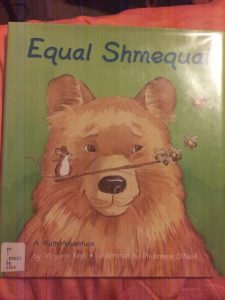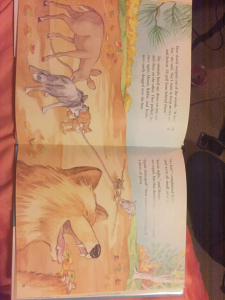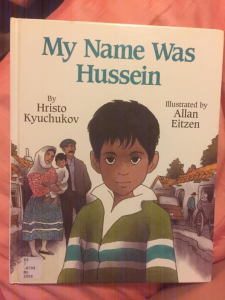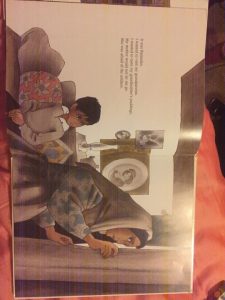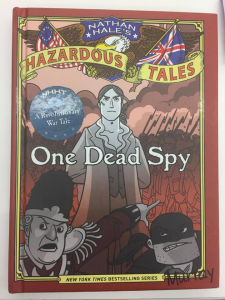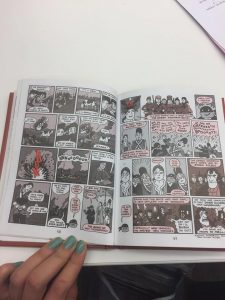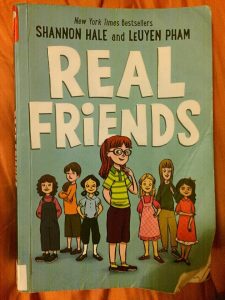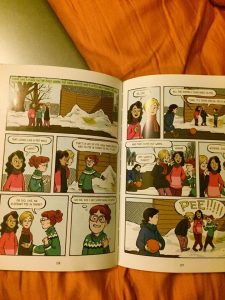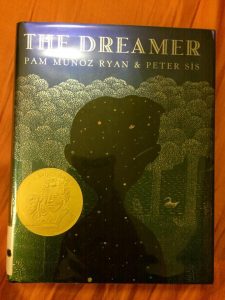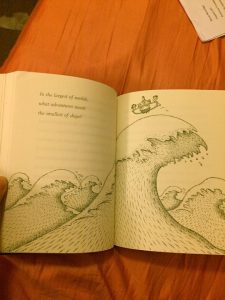Title: Equal Shmequal
Author: Virginia Kroll
Illustrator: Philomena O’Neill
Publisher/Year: Library of Congress, 2005
Number of Pages: 32
Tags/Themes: Animals, Fantasy, Math, Picture book, K-1, 2-3, Rebecca Cauthorn
Genre: Fiction
Descriptive Annotation: This book is about a group of animals who are trying to figure out how to make equal tug of war teams. At the end of the book there is a special note with the literal definition of the word equal. This is important because they talk about different kinds of equality throughout the book, equal number, equal size, equal weight, equal effort, etcetera. Students would not necessarily need to have any background knowledge of this book, but I would make it a point to make sure that they understand what the word equal means by the end of the book.
Classroom Application: This book would be a good way to introduce a math lesson on what it means to be equal. Because it discusses numbers and halves, it would be appropriate for a younger audience. Additionally, I would use part of the text which I disagree with to create a mini lesson. At one point, mouse says, “Equal means fair”, which I definitely do not agree with. I understand, for the purpose of the book, why the author said this. However, in the classroom setting, fair is not always equal because different students need different accommodations! So I would still use this book to help introduce the concept of equality in terms of math, but I would use that part to show that Mouse wasn’t right about that all the time.
Linguistic and Cultural Diversity Analysis: At the beginning of the book, Mouse is watching children play on the playground. The illustrator portrayed them as being many different races. This is important because the ethnic makeup of the classroom is likely to be diverse, so by using books which also show diversity it helps students understand that it doesn’t matter what color you are! The language in the book is easy to read, as demonstrated in this line, “Bear walked out from the trees. ‘What do you want to play?’”. However, the size of the text is on the smaller side and there is a lot of text on each page which could make it challenging for some students in lower grades. This book might be a good one to read out loud and have kids make predictions about what is going to happen next.
Illustration:
